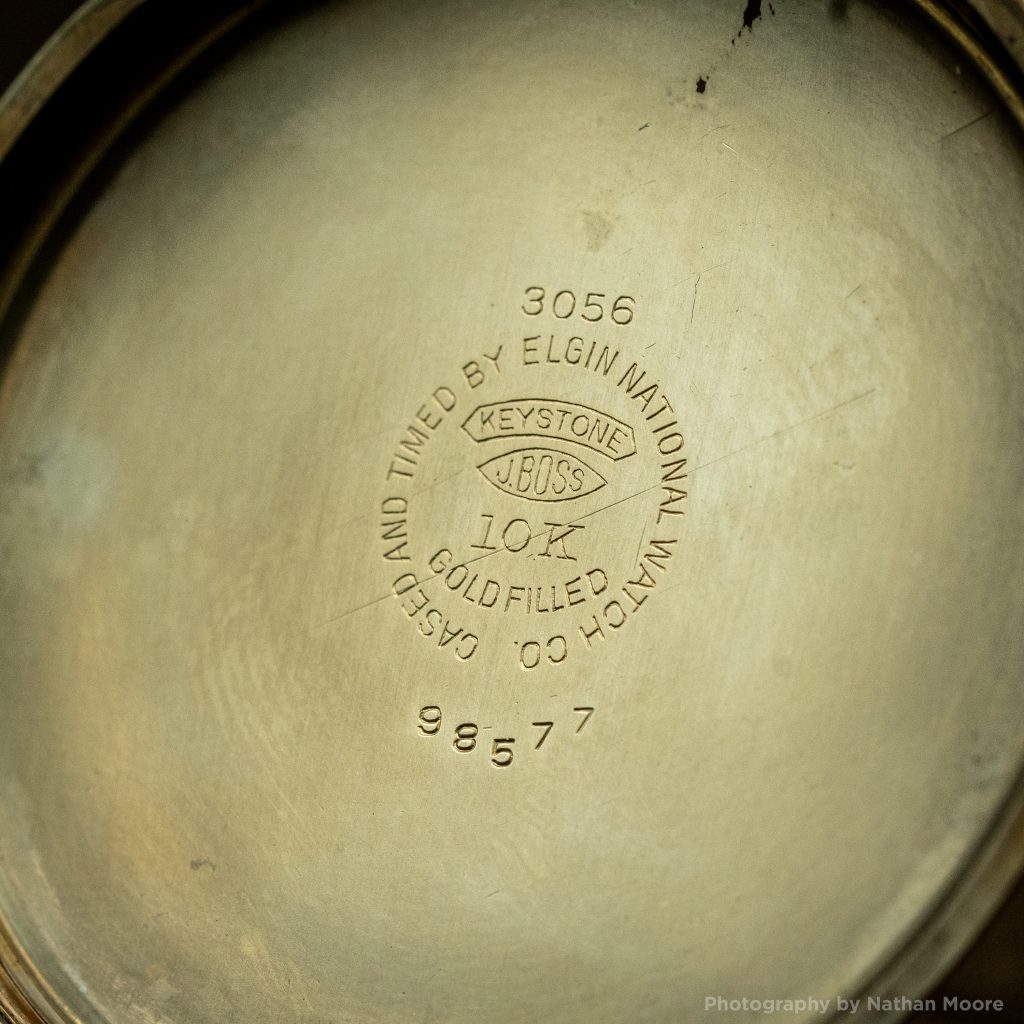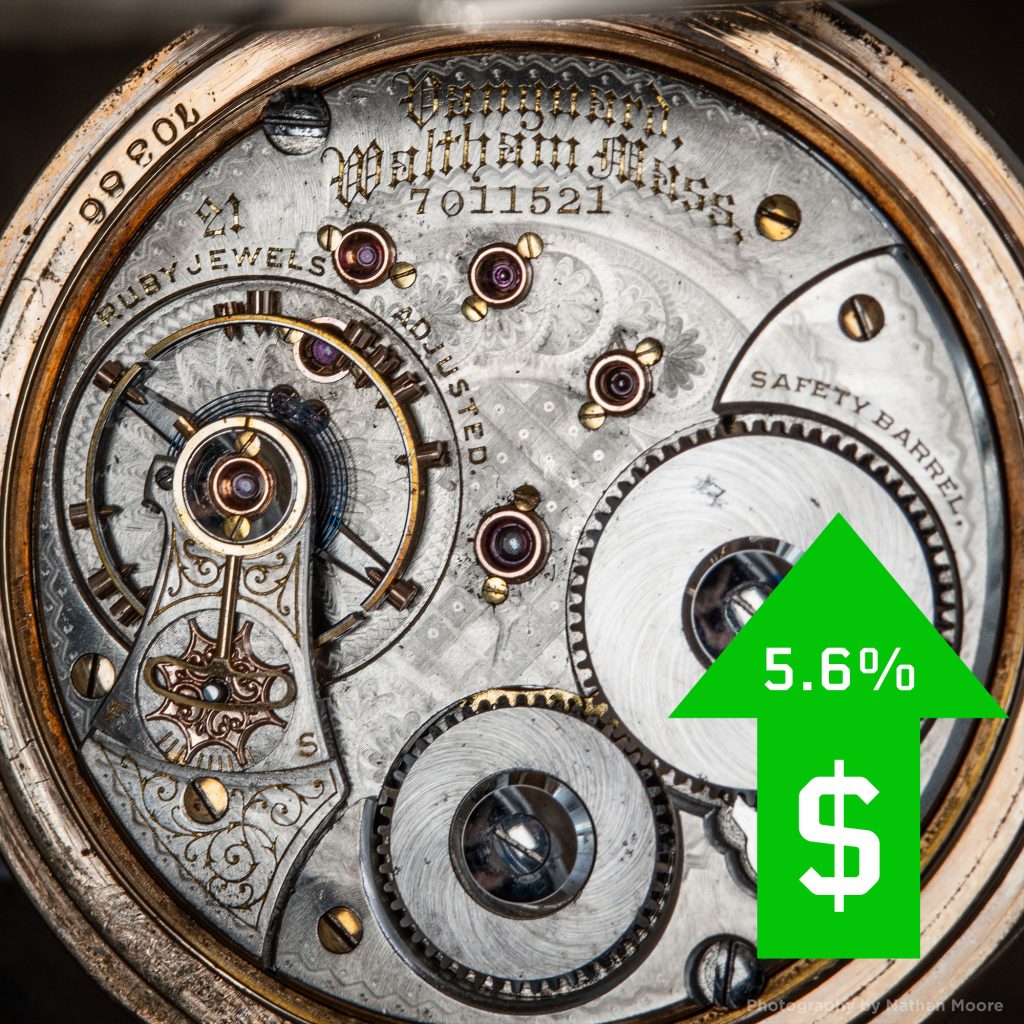Policing the Case Back: The 1948 Codification of Watch Case Marks

In 1948, the Federal Trade Commission tightened U.S. watch-case practices by adopting rules that required clear, truthful disclosure of case composition. These rules set out detailed marking requirements and enforcement standards for honest descriptions of metals and finishes.
Evidence of these practices was commonly seen on factory-cased watches of the 1950s and 1960s, as well as on “replacement” cases sold to recondition older watches.
Note: For focus and readability, provisions not central to case construction and composition marking were omitted.
Requirements of the 1948 FTC codification
- Where marks appeared. Composition marks were required on the outside of the case. Pocket-watch cases of at least three-piece construction that a layperson could reasonably open were permitted to be marked inside the back. Very small cases that could not be marked externally used a durable tag (to remain through sale) together with an inside mark.
- Abbreviations. Only a few abbreviations were permitted: “G” (gold), “K”/”Kt” (karat), “Ster.” (sterling), and “Chr.” (chromium, as in “Chr. plated steel”). Other words were not to be abbreviated, so the proper markings were “Rolled Gold Plate” and “Gold Filled,” not “R.G.P.” or “G.F.” “Electroplate/electroplated” was not to be abbreviated.
- Gold representations (10K minimum). Any representation of gold required an alloy of at least 10K. Parts below 10K were treated as base metal for marking purposes.
- Rolled Gold Plate (mechanical plating). The outer gold layer was required to be at least 0.0005″ thick after finishing, and the mark was to disclose the kind, fineness, and thickness (e.g., “14K Rolled Gold Plate”).
- Gold Electroplate used in place of RGP. When electroplate was used as the substitute for RGP, the outer gold layer was required to be at least 0.0015″, and the thickness was to be stamped (e.g., “Gold Electroplate .0015”).
- Gold-Filled (mechanical plating). The outer gold layer was required to be at least 0.003″ thick after finishing, with the mark disclosing kind, fineness, and thickness (e.g., “14K Gold Filled”).
- Gold Electroplate used in place of Gold-Filled. When electroplate was used as the substitute for Gold-Filled, the outer gold layer was required to be at least 0.003″, and the thickness was to be stamped (e.g., “Gold Electroplate .003”).
- Tolerances. A minus-20% tolerance was permitted only if the total precious-metal quantity remaining equaled what the specified minimum thickness would provide over the entire exterior. To stay compliant after forming and finishing, manufacturers were advised to start around 0.0035″ for Gold-Filled and 0.002″ for Rolled Gold Plate.
- Inner surfaces. Two-piece cases were not required to have an inner gold layer if the inner surface was non-corrosive or treated to be non-corrosive. For cases of more than two-piece construction (including hunting cases), the inner surface was required to be plated to at least 0.001″ at the same fineness as the outer surface.
- Other precious-metal platings (e.g., silver, palladium). The mark was to disclose the kind/quality of the precious metal and the thickness of the plating, clearly and non-deceptively.
- Flashed or deficient plating. Base-metal stock with precious-metal plating under 0.0015″ was to be marked “Base Metal” (or clearly identified as a very thin flashed coating) and not represented as a substantial plate.
- Base-metal look-alikes. Coatings simulating precious metals were to be marked plainly and transparently (e.g., “Chromium Plated Steel,” “Nickel Plated Steel,” or “Base Metal”).
- Combination cases. Where different parts used different materials, each part was to be marked and the part identified (e.g., “Base Metal Back — 14K Gold Filled Bezel”). As an alternative, the manufacturer could mark the lowest applicable grade for the whole case, provided the result was not deceptive.
- When parts were deemed base metal. Platings under 0.0015″ or gold alloys under 10K were treated as base metal for marking.
- Marks not to be altered. Obliteration, concealment, imitation, or removal of marks that could deceive about composition or origin was prohibited.
- Watches attached to jewelry. The case and any attached jewelry (e.g., a pin) were to be marked separately.
- Manufacturer identification. Makers were expected to stamp a legible name or identification mark inside the case; omitting or obliterating this was treated as an unfair practice.
- Prohibited or misleading trade names. Words or names implying precious-metal content (e.g., “silveroid,” “silverline,” “duragold,” “goldine”) were prohibited when they misrepresented the article’s true composition or fineness.
- Guarantees and warranties. Time-length guarantees were not banned outright, but guarantees and warranties were not to be deceptive, impracticable, or confusing; required disclosures were to be clear.
With these rules in place, the industry practiced more transparent composition marking. This was also when “Base Metal” marks became more prominent—often signaling cases with thin precious-metal coatings that did not qualify as Rolled Gold Plate or Gold-Filled.
Many case companies were already marking cases clearly with fineness and composition, but the 1948 FTC guidelines established a standard for layer thickness, removing ambiguity from using terms like “Gold Filled” and “Rolled Gold Plate.”


![Waltham Model 1870 Crescent Street, c.1871 [Dial] img](https://blog.pocketwatchdatabase.com/wp-content/uploads/2022/01/130433389_396303908471537_4542185724616964075_n-1024x1024.jpg)
